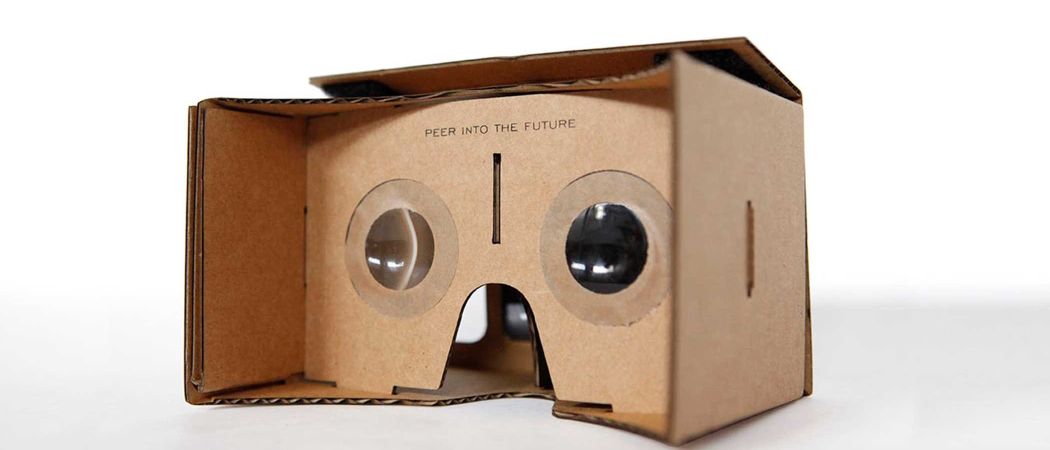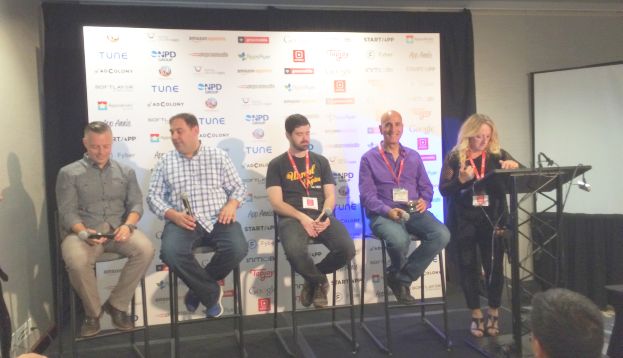The Casual Connect conference has multiple tracks, all packed with information — and today’s sessions on virtual reality (VR) gave some insight from the leaders in VR as to where the field is going and what challenges it faces along the way.
Google’s chief game designer is Noah Falstein, a veteran designer with an amazing background in games beginning with arcade games at Williams through many years of game design at Lucasfilm Games (later LucasArts), and many years consulting on games for a variety of clients. Now,as Google’s chief game designer, Falstein is helping many people at Google move forward on things like Google Cardboard (the world’s leading VR platform right now) and Project Tango, which is a smartphone that can bring your environment directly into 3D and connect with VR.
“What we’re trying to do with VR is let you see inside someone else’s head,” Falstein said. Google is making good progress at getting the technology out there for designers to experiment with; about 3000 Tango development systems out there, although Falstein noted “it’s more of an AR unit but it can do VR with a headset.” On the VR side, there are 1 million Google Cardboard copies and over 1 million downloads of Google Cardboard installed on smartphones, and it’s now available for iOS. “Google Cardboard is now the biggest installed base of VR systems out there,” Falstein noted. “VR is a big step forward. It’s ready for prime time. Over 1 million is a blue Great Lake, but not necessarily an ocean. Can oceanhood be far behind?”
Falstein gave a talk on VR design principles, noting a number of things that designers have been agreeing on about VR as many hundreds of design projects are under way. Issues like viewing angles may vary from one set of VR hardware to another, but in general it’s pretty clear that you should keep interesting stuff in front of the viewer and not to far off to the side.
Design for VR is complicated, though, since so many things game designers or media designers are used to need to be re-examined. Depth cues and physical cues are critical, since getting even one of them wrong can reduce a VR user’s sense of immersion; get too many wrong and you risk causing motion sickness. Falstein had some suggestions for VR designers: “Put the UI into the 3D world — it’s the easiest solution but not the most satisfactory,” he said. Designers will continue to look for better answers.
“There are quite a few things developers have learned,” Falstein said. “I love the fact we’re all going out and sharing it with each other. There’s a lot of excitement with these new frontiers. It’s on a level with film and photography so we need to work together on this.” He closed out his talk by recommending that designers keep it simple, and be willing to experiment — there is so much left to discover.

The Future of VR
This panel discussion brought together for the first time a group of some of the leading companies in VR to talk about the future of the technology. The panel included (in the photo, from left to right) Aaron Davies, head of partner relations at Oculus VR; Carl Callewaert, Americas director and global leader of evangelism for Unity; Ray Davis, the general manager of Unreal Engine 4 for Epic Games; Google’s chief game designer Noah Falstein, with M2 Research’s Wanda Meloni as the moderator.
Meloni asked about the key obstacles to the future of VR for developers, and the panel had some interesting points to make. Davis noted that “just getting your hands on stuff has been difficult” but that phase is pretty much over as hardware is getting out to thousands of developers. “It’s a blessing and a curse,” Davis said about VR. “With game development we were getting close to figuring it all out, and for me personally it was getting a bit dull because there wasn’t the same challenge. So VR has been really invigorating for me.” Still, despite the excitement, there are problems aplenty to solve. “Control of the camera in games is a very important thing, and now that’s gone,” Davis pointed out as one example.
“This is more fundamental a shift than previous ones like going from 2D to 3D,” Falstein said. “It’s very challenging and very exciting at the same time.” Callewaert agreed, noting that “We are all immigrants to this territory. In ten years there will be natives, people who have grown up in VR” and then the products they develop will be much more sophisticated.
Patience is indicated before anyone gets too excited about VR. “I think expecations are dramatically higher than what the market can deliver,” Davies cautioned. There’s plenty of technological advancements we still need to see. “The evolution goes from true opaque VR to pass-through experiences (AR/VR) and eventually get to AR, the golden goal,” Davies said. Falstein agreed there’s much more left to do. “It feels clear we are moving towards a world where we can mix in graphics with the real world and not see the seams,” he said.
Meloni asked the panel for some words of wisdom for VR developers, and they obliged. “A lot of your assumptions are just different with VR,” said Falstein. “It requires a lot of experimentation, you have to be humble, you have to fail. It’s true in game design but it’s really true with this.”
“Failure is part of it,” Callewaert said. “If you don’t embrace failure, you won’t get there.” And Epic’s Ray Davis said, “Go in with open eyes. Take a step back and think of novel approaches.”
The future for VR is exciting, but it’s going to take time to build into a substantive market — and we don’t yet know what the shape of that market will be, or when it will arrive.

